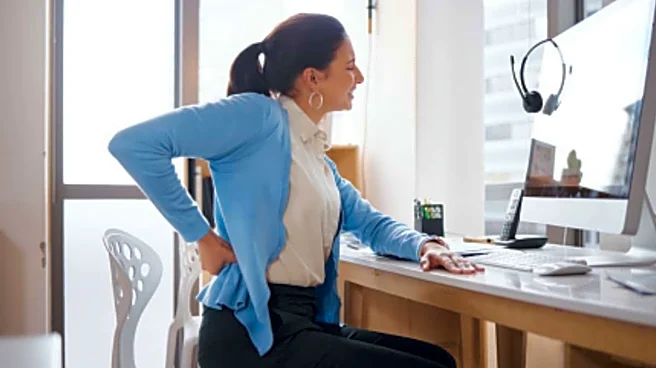“As a doctor, I often observe a look of disbelief on my patients’ faces when we discuss osteoporosis. There’s a common belief that osteoporosis affects only the elderly, those aged 70 and above. However,
I am increasingly seeing osteoporosis appear much earlier, often in women in their late 40s and 50s. This isn’t an unfortunate coincidence limited to my practice; it’s a reflection of how we are living our lives today,” shares Dr Dharam P. Pandey, Director (CPRS), Center for Physiotherapy & Rehabilitation Science, Sharda Care Healthcity.
You can think of your bones like a bank account. During your youth, you make “deposits,” building a strong bone bank. The real question is, are we withdrawing too early and too often because of our lifestyle choices? Let’s explore why.
Lifestyle and Nutrition: The Foundation of Bone Health
Our daily habits have a profound impact on the strength of our bones. “Many of us have fallen into the trap of convenience replacing nutrient-dense whole foods with highly processed alternatives. Your bones are silently pleading for calcium and Vitamin D, both of which are essential to build and maintain a strong skeleton,” adds Dr Pandey.
When your diet lacks leafy green vegetables, dairy, or sunlight exposure for Vitamin D synthesis, your skeleton becomes like a brick wall built with half the bricks missing, fragile and incomplete.
Dr Pandey shares, “Habits such as smoking and excessive alcohol consumption are equally harmful, acting as insidious thieves that rob minerals from your bones and disrupt the body’s natural process of bone regeneration. Chronic stress and poor sleep hallmarks of our fast-paced world, elevate cortisol levels, a hormone that, when present in excess, can accelerate bone loss.”
The Role of Exercise: Building Stronger Bones Through Movement
While diet is essential, it’s not enough on its own. Regular weight-bearing and resistance exercises play a crucial role in preventing and managing osteoporosis. Physical activity stimulates osteoblastic activity (bone formation) by subjecting the skeleton to controlled mechanical stress, enhancing bone remodeling and mineral deposition.
“Exercises such as brisk walking, stair climbing, dancing, resistance band training, and light weightlifting are particularly beneficial. They not only improve bone density but also strengthen muscles, reducing the risk of falls and fractures,” adds Dr Pandey.
Moreover, physical activity improves calcium absorption efficiency by enhancing circulation, hormonal balance (including parathyroid and Vitamin D metabolism), and muscle-bone interaction. Together, adequate nutrition and consistent exercise create a synergistic effect — optimizing bone strength, maintaining posture, and promoting independence as we age.
Menopause: The Hormonal Transition
For women, menopause marks a natural milestone but also a major turning point in bone health. Think of the hormone estrogen as your bones’ trusted guardian regulating the balance between bone resorption and new bone formation, keeping your skeleton dense and resilient.
Dr Pandey opines, “During perimenopause and menopause, estrogen levels drop sharply. When this protective guard retires, bone breakdown begins to exceed bone formation, leading to rapid loss of bone density. This is why the years immediately following menopause are so critical they represent a period of accelerated bone loss, when protective interventions are most needed to prevent osteoporosis.”
The Sedentary Trap: “Use It or Lose It”
Our bodies are incredibly efficient and that efficiency can work against us. You lose it if you don’t use it, and this is especially true for your bones. Bones are living tissues that adapt to the stresses placed upon them.
When you engage in weight-bearing activities like walking, jogging, dancing, or stair climbing, you apply small, healthy stresses that stimulate bone strength. Conversely, a sedentary lifestyle, sitting at a desk, driving, and then relaxing on the couch, signals to your bones that they are no longer needed. In response, they weaken and become more porous over time.
“Inactive muscles also contribute to the problem. When muscles weaken, bones are forced to bear the body’s load alone, increasing the risk of fractures and fragility.
The Good News: Prevention Is in Your Hands
The best part? Your bone health is within your control. Every day presents an opportunity to make choices that support your skeletal strength. You are never too young or too old to take preventive action.
By maintaining a balanced diet, considering hormonal and nutritional support, and staying physically active, you can preserve your bone bank for years to come. Remember: the strength of your future lies in the choices you make today.



/images/ppid_a911dc6a-image-17604272257304893.webp)

/images/ppid_a911dc6a-image-176034042704687165.webp)





/images/ppid_a911dc6a-image-176028170672958707.webp)
/images/ppid_a911dc6a-image-176019487126745241.webp)
